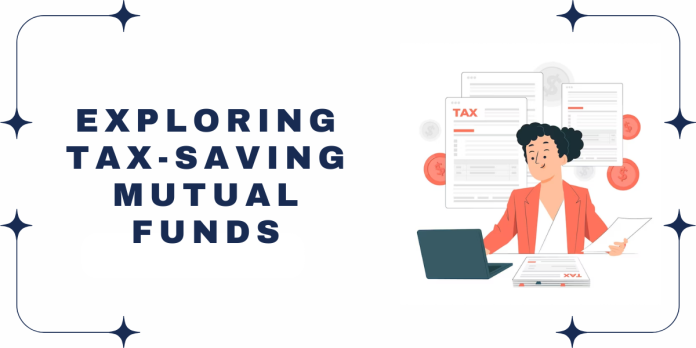Everyone who wants to pay less tax and possibly make more money might like Tax-Saving Mutual Funds. These funds, also called Equity Linked Savings Schemes (ELSS), give tax advantages, and let you invest in the market. But before you choose this investment, it’s important to know its good and not-so-good sides.
This article will explore the good and bad things about Tax-Saving Mutual Funds which will help readers decide better about how they invest and plan their taxes.
What is Tax Saving Mutual Funds?
Tax-Saving Mutual Funds, or Equity Linked Savings Schemes (ELSS), are a special type of mutual fund in India designed to give tax advantages to investors. These funds mainly put money in stocks, either directly or through related instruments like stocks or equity derivatives. Their goal is to increase investment value over a long time by joining in the growth of the stock market. These funds have a lock-in period of three years, requiring investors to keep their money invested for at least three years from the date they invest.
Who should invest in it?
Tax-Saving Mutual Funds (MFs) are suitable for people who owe taxes and wish to lower their tax payments while aiming for potential long-term financial growth. These funds work well for long-term investors who are ready to keep their money invested for the lock-in period. Individuals seeking exposure to stocks and aiming for higher returns compared to usual tax-saving options might also find tax-saving mutual funds beneficial.
Advantages of Tax-Saving Mutual Funds:
- Tax Savings: Investments in ELSS funds under Section 80C of the Indian Income Tax Act allow deductions of up to Rs 1.5 lakh. This aids in reducing taxable income and the overall tax liability for investors.
- Diversification: ELSS funds spread investments across various industries and market sizes, reducing risk compared to investing solely in individual stocks. This diversification enhances the potential for consistent profits.
- Potential for Higher Returns: As ELSS funds primarily invest in stocks, they offer a greater potential for returns compared to traditional tax-saving options like Fixed Deposits (FD) or Public Provident Fund (PPF). Historically, equities have shown higher returns over the long term, enabling investors to grow their wealth.
- Lock-in Period: ELSS funds come with a mandatory three-year lock-in period. This duration promotes long-term investment discipline, preventing impulsive actions during short-term market fluctuations. It encourages investors to stay invested, potentially benefiting from the power of compounding.
- Liquidity Options: Tax-saving mutual funds offer relatively higher liquidity compared to other tax-saving options like National Savings Certificates (NSC) or the PPF, even though they have their own lock-in period. Investors have the choice to either redeem their assets or keep holding them after the lock-in period has ended, depending on their financial objectives and the state of the market.
Read: Investing in ELSS Mutual Funds
Drawbacks of Tax-Saving Mutual Funds:
- Associated Market Risks: These funds primarily invest in stocks, making them susceptible to market fluctuations. Their performance is directly linked to the stock market, and during downturns or volatility, the value of assets in these funds can decrease, potentially leading to financial losses.
- Taxation on Capital Gains: While tax-saving mutual funds offer tax benefits during the investment period, any Capital Gains realized upon redemption are taxable. Long-term capital gains on equity investments in these funds beyond a certain threshold are subject to taxation, affecting the overall profits for investors.
- No Guaranteed Returns: Tax-saving mutual funds do not guarantee returns. Their performance is influenced by market movements and fund management quality. There’s a possibility of underperformance, resulting in lower or negative returns.
- Risks of Market Timing: Investing in these funds often involves making decisions based on current market conditions. Timing the market correctly can be challenging, and making choices influenced by short-term market movements may lead to unfavourable outcomes. It’s important to adopt a long-term perspective and avoid attempting to time the market.
- Lack of Liquidity During Lock-In: Tax-saving mutual funds have a mandatory three-year lock-in period, restricting investors from withdrawing their money during this time. This lack of liquidity limits the ability to access funds for unforeseen financial needs until the lock-in period expires.
Read in Detail: Demystifying Mutual Fund Myths: Fact vs Fiction
Best performing ELSS funds in India:
| Scheme Name | 1Y Return % | 2Y Return % | 3Y Return % |
| Sundaram Long Term Micro Cap Tax Advantage Fund – Series VI | 36% | 20% | 43% |
| Sundaram Long Term Tax Advantage Fund – Series III | 37% | 22% | 42% |
| Sundaram Long Term Micro Cap Tax Advantage Fund | 36% | 21% | 41% |
| Sundaram Long Term Tax Advantage Fund – Series IV | 37% | 22% | 41% |
| Sundaram Long Term Micro Cap Tax Advantage Fund – Series III | 36% | 20% | 41% |
| Sundaram Long Term Micro Cap Tax Advantage Fund – Series V | 33% | 18% | 40% |
| Quant Tax Plan | 15% | 13% | 33% |
| SBI Long Term Advantage Fund – Series IV | 18% | 11% | 31% |
Disclaimer: This blog has been written exclusively for educational purposes. The securities mentioned are only examples and not recommendations. It is based on several secondary sources on the internet and is subject to changes. Please consult an expert before making related decisions.


